

An important objective of the project is to raise awareness of young people taking into account the new generation of artists, designers, stakeholders, architects dealing with ceramics. The part Future Lights in Ceramics aims to provide profound knowledge on ceramics to young people through contact and discussion with experts. Together with the European Ceramic Society (ECerS), federation of European national ceramic societies, an exchange of artistic and creative skills and knowledge about technology and material science is intended. The transfer of knowledge will drive new aspirations. The group of young people, the Future Lights in Ceramics, coming from the world of research, design, architecture, industry, will exchange their qualifications and expose their ideas to extend and improve innovation of technical ceramics.
The aim of the Young Ambassador Programme is to establish an international network with all young actors dealing with ceramics to exchange their ideas about the material and its perspective considering new consumers tendencies and new challenges such as integration and sustainable development. They will expose the results of their reflection through presentations at relevant events. Young Ambassadors will develop a meaningful and on-going relationship which will be an international guideline to encourage research and innovation in all the fields of ceramics. The first Future Lights were awarded during a competition at Staffordshire University in October 2015. This year the winners of the Future Lights Competition 2016/17 are presented at the Ambiente fair.
Ceramics have always played a prominent role in the life of people in every European country. Its products were items used on daily basis for decoration or representation; they were and are still present in private homes as well as public areas in towns and villages. Ceramics in Europe have been shaped by the strong interdependency in Europe’s cultural region, techniques and colours, as well as by being used in a historical-cultural context such as for eating and drinking, decoration or architecture. Ceramics connect people, but they also enable regional differences, such as traditions, life-styles, and social or economic behaviours to be expressed and therefore develop an individual identity. Thanks to its characteristics and design possibilities, ceramics play an outstanding role in the lives of people and will continue to do so.
The past few decades have changed both Europe and the world presenting new social and economic challenges. Over the course of globalisation, our lifestyles have changed and are now closer to each other than ever before. There is a real cultural interchange which is also giving an impact on the design of European ceramics.
This ambitious project will connect museums, architects, designers, industry, and stakeholders from different European countries to explore the material according to its cultural, historical, technical, and artistic aspects. The course of the project will be punctuated by a series of events: exhibitions, workshops, symposia in all partner countries to encourage knowledge in the field of ceramics and to develop an inter-cultural dialogue between European ceramics regions.
The project intends to analyse the evolution and the different ways of use of ceramics from the baroque period to the present time. It places a lot of importance in discovering the future by studying the evolution of ceramics according to new challenges such as consumer’s needs, sustainable development and integration of minorities. Potential of new technologies will be explored to enable communication and access for numerous groups.
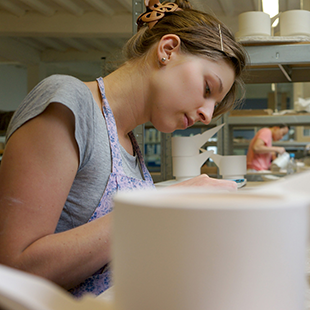
Karolina took part in several internships abroad, one of which took place at Keramische Werkstatt Margaretenhöhe in Essen, Germany (2012) and more recently at Museo Carlo Zauli in Faenza, Italy (2016). She participated also in projects like "Art Food" (2014) and "International Symposium of Ceramic Trends 2013" at Porcelain Factory Sargadelos in Cervo, Spain. She received a scholarship for students with outstanding achievements from Ministry of Science and Higher Education of Poland (2014) and she won the second prize at “Cevisama Lab Ceramic Design” International Tile Award in category "Ceramic products formed by other methods" in Valencia, Spain (2013).
Statement
Creating ceramics demands knowledge in many separate things: in history of art and handcraft techniques, in chemistry and physics. Being conscious about the different influences, past experiences and possibilities is crucial too, because ceramics was and still is a significant element of everyday life. That’s why a dialogue between handcraft and industry is very important, and it gives me the chance to bring together the best properties of ceramic materials with my conscious sensitivity.
My favourite technique is majolica, hand painting with ceramic pigments on unfired glaze, which I learned during my stay in Faenza, Italy. Thanks to this technique, my ceramics, next to the modern shape, have an additional meaning, thanks to unique coverings of colour, compositions and graphics on the surface.
Furthermore, I value the possibility not to just contemplate the ceramic material, but how it can be used in a contemporary way with a connection to previous achievements of European art. This way, I can transfer an idea, which only ceramics, thanks to its properties, can demonstrate in its unique way.
Contact: www.karolinabednorz.com
Tri-Angle Maxi Cups: 8,5 x 10 x 13 cm, 2016, cast porcelain cup with a triangle base and triangle pattern ceramic patterns applied by stamp on glaze, 1250°C.
Tri-Angle Mini Cup with a saucer: 6 x 8 x 5 cm + 12 x 13,5 x 1,5 cm, 2017, cast porcelain espresso cup and saucer with a triangle base and triangle pattern ceramic patterns applied by stamp on glaze, 1250°C.
Tiles: 12,5 x 12,5 cm, 2017, cast porcelain square tiles and triangle pattern ceramic patterns applied by stamp on glaze, 1250°C.
Aloe: 8,5 x 16,5 x 11 cm, 2016, cast porcelain vessel, composed of a base cup and a diagonal leaf-shaped attachment, design modular, 1250°C. Project developed thanks to Art Food 2014, powered by culture.pl.
City Disasters - Construction Disaster, Smog and Trashes: 30 x 30 x 10 cm, 2014 (BA Project), modern depiction of city disasters on ceramic vessels, shown on hand thrown ceramic vessels in old technique of hand painting ceramic, majolica, fired 1200°C.
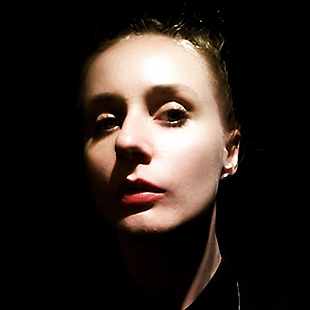
Maria worked in Tate Modern and Tate Britain and she participated in solo and group shows in New York, London, Berlin, Stockholm, Athens, Oslo, Bergen, Tunisia and all over Poland. At the moment she works at Tarfo Kunsthall Gallery in Oslo and with her brand Mari JJ Design in her ceramic studios between Norway and Poland.
Statement
“Design must seduce, shape, and perhaps more importantly, evoke an emotional response.” - A. Greiman
I got inspired by this motto early in my career. Over 15 years ago I started working with ceramics. To this day ceramics is my main medium in creating design, art and other forms of expression.
Mari JJ Design was founded in 2010 in Stockholm Sweden by Maria Jj Juchnowska based in Oslo Norway. She works in ceramics creating porcelain design objects and jewelry. Works are uniquely designed pieces which are handcrafted from the start to the finished product. Mari JJ Design is using finest porcelain often hand tinted and decorated. Maria takes her inspirations form Scandinavian minimalism and sophisticated European art and culture.
Contact: www.juchnowska.com
Blue Hands Set: Vase big H35 cm, Vase tall H26 cm, Vase round H24 cm, bowl H12 cm, cup H15 cm, 2015, made in stoneware.
La Traviata – green gold: Earrings, 1-2 cm, Pendant/brooch 3 x 4 cm, 2015/2016, carat gold paint, coloured porcelain, gold chain and elements.
La Traviata – pink gold: Earrings 1-2 cm, Pendant/brooch 3 x 4 cm, 2015/2016, carat gold paint, coloured porcelain, chain and elements.
Golden Babies: 3 x 4cm, 2016, made in stoneware and covered carat gold paint.
La Traviata on the model: Design Mari JJ Design, 2016, Photographer Wiktor Franko.
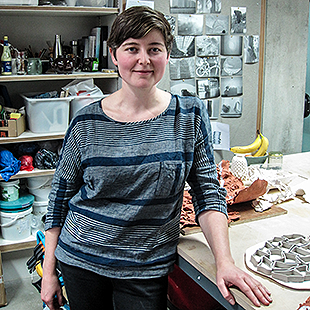
Monika Müller is a Swiss Designer and Artist, living in London, UK. She worked for Design Studio Benjamin Hubert Ltd (now Layer) and is currently doing her Master of Arts in Ceramics and Glass at the Royal College of Art in London.
Statement
When we talk about qualities of an object or a product, we will find out that a hand-crafted work has different qualities than industrial products.
Hand-crafted works tell stories. Humans naturally like following stories and with every maker’s mark spotted on an object, we follow the story of the object and imagine to know the object better, which builds up an emotional connection to it. A hand-crafted work embodies many immaterial values that probably only humans can read.
In an industrial product, no differences in mass production are tolerated and given guidelines of resources, process, price range and target market characterize the product and define its qualities.
Whereas a maker or artist gives an object its meaning, commercial goods are standardised and we probably give it a meaning as we start using it at home.
The challenge of giving a human touch to a mass product cannot be taken without looking into other fields than design and craft itself. As Masahiro Mori says in an interview with Norri Kageki for IEEE Spectrum: ‘ To develop robots, you need to understand humans.’ I think that this is just the right starting point for a project: If you want to create objects for humans, you need to understand humans. That is what I keep in mind when I design the object - it is an object for humans, so it will give it a human touch.
Contact: www.monikamuller.com
Bottle Skeleton: H35 x W20 x D20 cm, 2015, earthenware, hand built.
Bottle Veins blue: H35 x W20 x D20 cm, 2015, earthenware, slip cast.
Grid Cylinder large: H30 x W20 x D20 cm, 2016, earthenware, dipped.
Grid Cylinder small: H30 x W10 x D10 cm, 2016, earthenware, dipped.
Grid blue: H10 x W20 x D20 cm, 2016, earthenware, dipped.
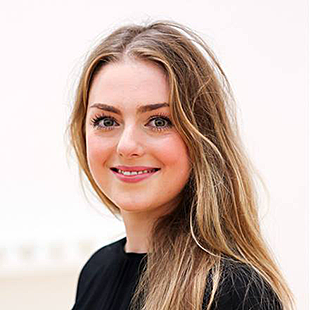
Rhiannon has held the position of a Studio Coordinator at the Guldagergaard International Ceramic Research Centre and currently works as Project Officer at Craft Northern Ireland. She additionally writes, contributing manuscripts towards publications and articles for international magazines and online platforms. She was awarded the Muriel Gahan Scholarship that funded research in the Rosenthal Archives in the Porzellanikon Museum, Selb in 2015.
Statement
My work is concerned with how the general European community relate to the materials and objects engrained in their everyday lives. I hope to inspire a familiar tactile experience through the experimental combination of contrasting materials inspired by tableware. The use of concrete and porcelain in contrast with plastic illustrates the importance of materials rooted in our everyday and historical European culture.
Due to the evolving needs of contemporary Europe in the 20th century most manufacture moved else where, leaving thousands without jobs. To relate through making I use a production line of manufacture putting myself in the place of those who have lost their jobs in production factories. In response to this loss instead of casting and decorating with traditional porcelains, glazes and lustres I cast and paint ceramic surfaces with plastic, combining materials and processes that we relate to in very different ways.
Like people, the objects I create sit confident and bold hoping to retain an identity and yet embody that which has been lost.
I had the great opportunity to review these relationships and conduct material research at the Porzellanikon Museum, Selb and more recently at the Shaping the Future Workshop led by Ceramics and its Dimensions, Kahla production factory, Germany.
Contact: www.ewing-james.com
Collection of Tea Pot Knobs: H3 cm, Ø 3cm, 2016, cast and press moulded ceramic teapot knobs (terracotta, stoneware, various brick clays), casted in two types of plastic (Polyurethane resin and Jesmonite in various colours), 3D printed in plastic and ceramic.
Made in KAHLA: H2 cm, Ø 15cm, 2016, refractory concrete casted within existing industrially produced plates.
Made in KAHLA - Shard: H2 cm, Ø 15cm, 2016, refractory concrete casted within existing industrially produced plates with porcelain shards and grog.
Made in KAHLA - Stamp: H2 cm, Ø 15cm, 2016, refractory concrete casted within existing industrially produced plates with cobalt stamp decoration.
Vent: H15cm, L30cm, D4cm, 2014 porcelain painted with polyurethane resin and water colour.
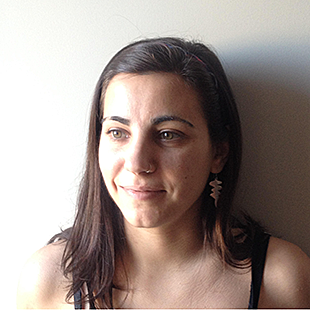
Currently she designs and produces at SaV Ceramics, a Design Studio shared with her partner who is also a product designer in Stoke on Trent while finishing the MA course. She is currently studying for a Bachelors-degree in Ceramics.
Statement
According to this globalized times in which two persons have exactly the same product even though they live in opposite corners of the world, people are turning into uniqueness and authenticity.
The advantage of industrial processes is to accelerate production times, reducing costs and lowering prices achieving goods affordable for more people. By accepting and taking advantage of the use of new technologies means it is possible to translate hand-made subtlety into industrially produced products, like Masahiro Mori did with his works.
The best way to incorporate craft details into industrially produced ceramics is to study those craft and industrial processes deep and carefully to find the gaps and intersections between both, where to insert distinguished details achieving a different result.
In my works, can be found 2D or 3D details, very carefully thought, which were first drawn by hand, then adjusted in 2D CAD software, like the blue patterns or 3D CAD software, like the mugs, to additionally make them. By now they have been produced in small batches but can be produced with the casting methods in large series.
The inclusion of CAD software and 3D printed models save time and allows to explore different solutions with immediate previewing to apply changes in the early stages of the original product.
Contact: www.facebook.com/SaV.Ceramics
Mandala Collection: 6 Mugs in different colours L12 x W9 x H8 cm, 6 Plates in different colours L14,7 x W14,7 x H 1,5 cm, 6 Mini-Plates in different colours L9 x W9 x H1,2 cm, 2016, fully vitrified coloured porcelain, glazes with clear glossy, 1240°C oxidation firing in elextric kiln.
Recta Milk jugs: L10 x W7,5 x 6cm (with handle), L8,5 x W7,5 x H6 cm (without handle), pattern: Intersección, 2015, fully vitrified bone china, glazes with clear glossy, decorated with cobalt blue and platinum patterns, 1240°C oxidation firing in electric kiln, plaster models, plaster moulds, body and handles slip casted and then attached.
Textured Light Collection – Hypnotic: L23 x W6 x H23 cm, 2016, fully vitrified Bone china, glazes with clear glossy, plaster model, plaster mould, slip casted, hand carved pattern, 1240°C oxidation firing in electric kiln.
Textured Light Collection – Star: L23 x W6 x H23 cm, 2016, fully vitrified Bone china, glazes with clear glossy, 3D printed model, plaster mould, slip casted, 1240°C oxidation firing in electric kiln.
Mandala Collection: Mug L12 x W9 x H8 cm, Plate L14,7 x W14,7 x H 1,5 cm, Mini-Plate L9 x W9 x H1,2 cm, 2016, fully vitrified coloured porcelain, glazes with clear glossy,1240°C oxidation firing in electric kiln.
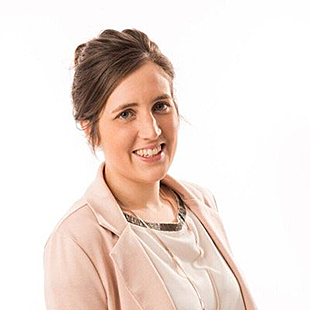
Wendy Ward has spent time at the International Ceramic Centre in Denmark where she experimented with ceramic 3D printing and has worked alongside Queen’s University Belfast to carry out research into water-jet cutting unfired porcelain, enabling her to work on a larger industrial scale.
Statement
As an emerging designer maker, my practice centres on the qualities of handcrafted work within industrially produced slip-cast ceramics. My aim is to interpret the irregular forms and hand drawn patterns and structures into the porcelain whilst keeping the uniform qualities of industrial production.
During the last 3 years and through my MFA in Multidisciplinary Design I have been striving to produce lighting that combines traditional craft with new technologies and believe the Lace Droplet pendants exhibit the qualities of handcrafted work using an industrial process.
Having been placed on the Craft Northern Ireland ‘Making IT’ programme, this business development course has enabled me to develop a well informed understanding of the current ceramic market, enabling me to produce products that satisfy the growing demand for objects which although mass produced, appear to be unique.
Having since been placed within an industrial design and manufacturing environment in Belleek Pottery Ltd, I believe I have developed a Product range that incorporates the qualities of handcrafted work into industrially produced ceramics. In utilizing the slip-casting technique I have been able to create a product that is of a high finish and standard, enabling me to produce units quickly with a low failure rate. In using this process, I have been able to make multiples of the same design, a product that is all handcrafted but with the qualities of an industrially produced item.
Contact: www.wendy-ward.co.uk
Lace Droplet Pendants: L1,3 m, Ø 20 x 20 cm, 2015, porcelain, slip-cast and handfinished.
Lace Droplet Lamp: Ø 30 x 18 cm, 2015, porcelain and wenge wood, slip-cast and handfinished.
Lace Droplet Pendants: L1,3 m, Ø 20 x 20 cm, 2015, porcelain, slip-cast and handfinished.
Woodland Lamp: Ø 32 x 16 cm, 2016, porcelain, slip-cast and handfinished. Woodland votives: Ø 14 x 12 cm, 2016, porcelain, slip-cast and handfinished.
Woodland Pendant Set of 7: L1,8 m, Ø 32 cm, porcelain and aluminium, slip-cast and handfinished.
